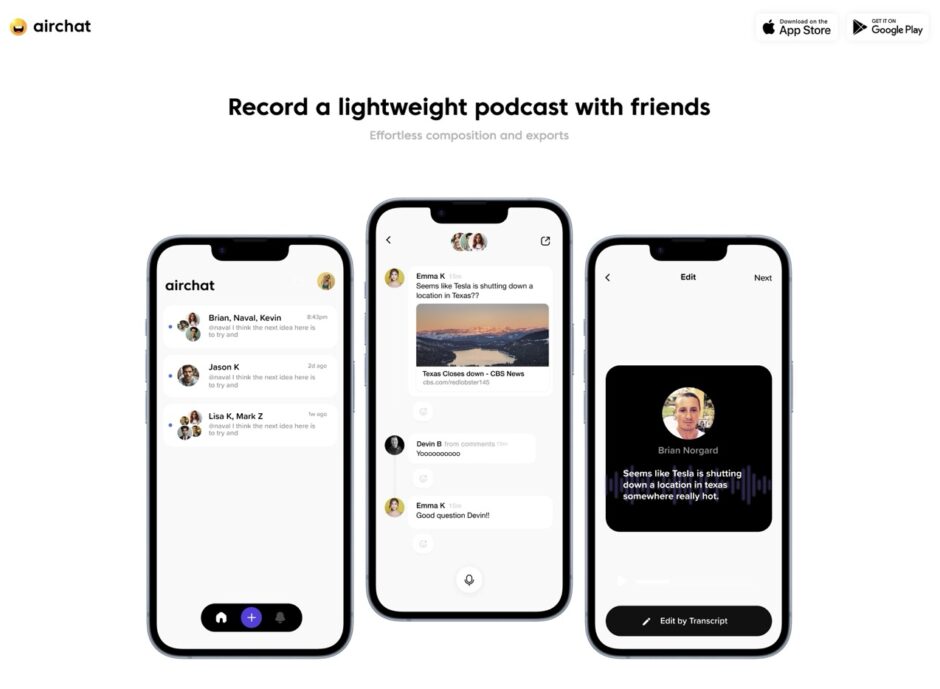Use your voice
The Airchat experiment seems to be over as a social voice app. The future of podcasting, as I titled my post year and half ago, is their new direction. Not as a social voice app but as a content creator tool.
Airchat iterated fast and released more versions than any user could keep track of. The database was wiped more than once, and so was your social graph and content.
It experimented, iterated and created a close-knit beta user community. There were unique experiences and moments within the community but also shared expertise as world events unfoulded.
The barrier to use your voice and consume content set the expectations to another level. Just talk, and read or listen to replies and posts. The transcript quality was exceptional. No other social media app has reached it yet.
Voice brings social communication closer to IRL interaction. You can hear the tone and other nuances of the speaker that are not carried over in the text. It’s hard to shout at people asynchronously. Misunderstandings happened when people read but did not listen to the message. Voice revealed an opposite meaning.
The AI is making human interaction rare and generated content will be the norm.
Authentic and spontaneous discussions are less performative and more playful. Interaction and interplay between participants create something no scripted podcast will convey.
This was the unique Airchat experience. Strangers got together, found something to share and started to talk, even in different languages that were translated automatically.
What was Airchat?
It was an almost real-time communication platform for ideas and content that could be shared and discovered publicly or in a smaller group setting. At its peak, it allowed you to use your voice or video to post messages with supporting images and links.
It brought the old casual walkie-talkie feel to the social realm. Just talk, don’t worry too much about it. The first take is good enough. It trained users to become better speakers. Filler words, ramblings or long-winded messages lost the audience fast. It revealed the personality behind the tweeter. The real thinkers and talkers who could do it without rehearsals or iterations.
The first version of Airchat tried to connect people with similar interests and allow them to share moments together over ideas or content. People and content discovery were the essential parts of the experience. It was people first, and via people service. You engaged with people and discovered the people they followed. The intimate setting was created by the web-of-trust social graph concept: you see the people who you follow and who they follow.
The second version removed the intimacy aspect by removing spaces that people could create to have public or closed “rooms”. The room concept brought agency to the owner of the room that allowed others to follow and participate in a familiar setting. There were topical rooms and person-based spaces for sharing and engaging with other users.
The new version had only public topics that did not allow you to fine-tune your feed to follow only particular person or curated experiences. The firehose approach destroyed the feed and made it hard to get updates from the people you followed.
This version tried to simplify the user-experience but it removed a lot of the features that made the platform unique: the illustrative (AI generated) post pictures and made the content sharing less versatile than previously.
The final iteration shifted from the original purpose overnight. It became a group direct messaging app without people and content discovery. The version removed threaded discussions and features that made the app valuable. This version was short-lived and it got rolled back to the previous one after user feedback and the version was finally deprecated to the lightweight podcasting tool it is today.
For Airchat examples, see my archives.

